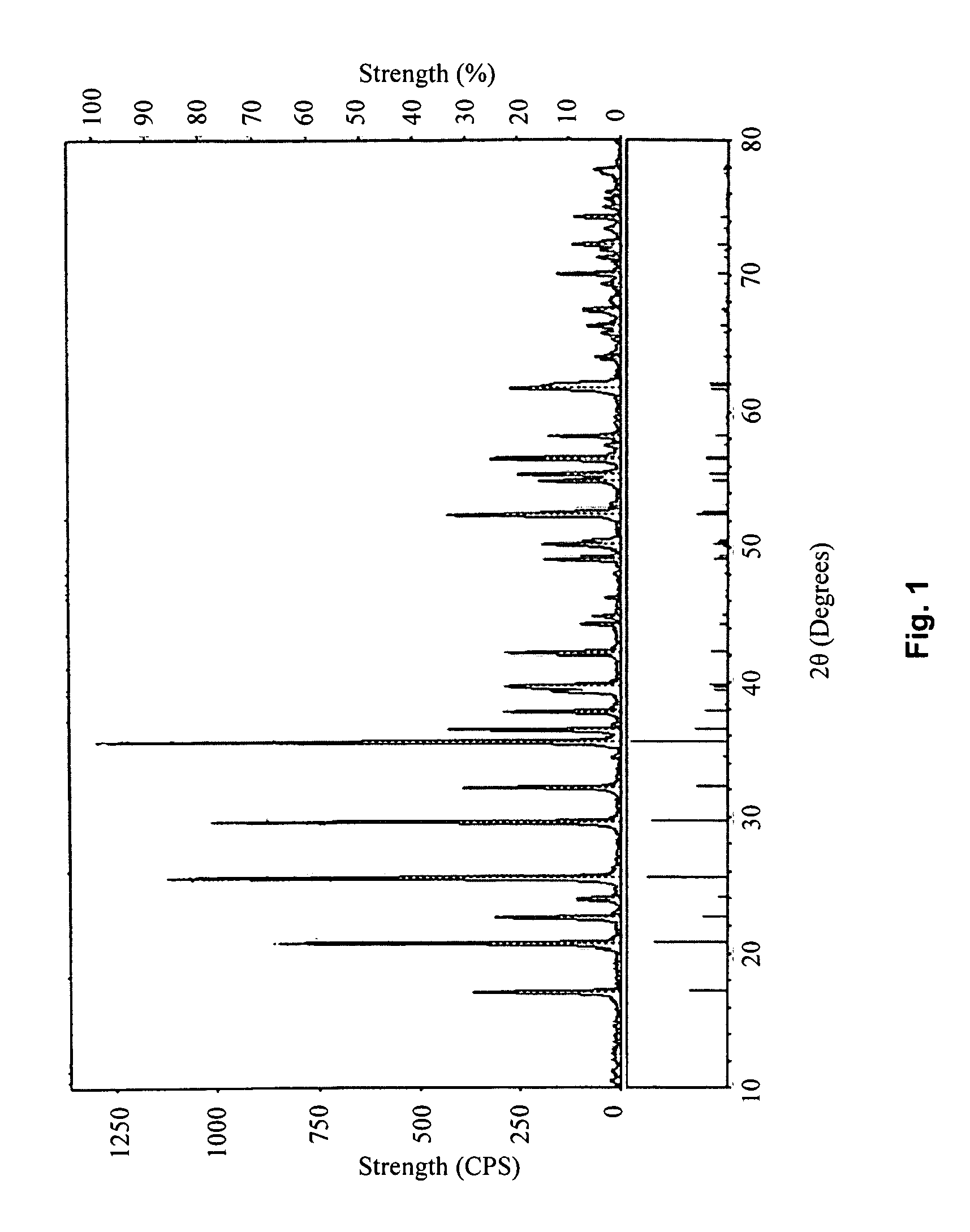Methods for Synthesizing Lithium Iron Phosphate as a Material for the Cathode of Lithium Batteries
a lithium battery and lithium iron phosphate technology, applied in the direction of phosphorus oxyacids, cell components, electrochemical generators, etc., can solve the problems of low purity, easy explosion of hsub>2 /sub>, and relatively low specific capacity of produced lithium iron phosphate, etc., to achieve high purity, high level of operational safety, and specific capacity
- Summary
- Abstract
- Description
- Claims
- Application Information
AI Technical Summary
Benefits of technology
Problems solved by technology
Method used
Image
Examples
embodiment 1
[0044]Heat 3047 g of FeC2O4.2H2O in a 280° C. vacuum-heating chamber (with a pressure of 500 Pa) for 3 hours to obtain a mixture of FeC2O4 and FeCO3, then cool to room temperature at a rate of 5° C. / min. The molar ratio of FeC2O4 and FeCO3 in said mixture can be calculated as 1:3; mix said mixture with 626 g of LiCO3, 1948 g of NH4PO4, 337.6 g of dextrose, and 4500 g of industrial alcohol, then place the resulting slurry into a ball-rolling container, with a ball-to-material mass ratio of 2:1; seal the container and ball-mill for 6 hours; and place the ball-milled slurry in a 50° C. heating chamber, and warm-dry for 8 hours to dry out the alcohol. Afterwards, heat the resulting dried mixture to 380° C. in a protective environment of nitrogen gas at a rate of 3° C. / min. Sinter for 10 hours at 380° C., then cool to room temperature at a rate of 10° C. / min. Afterwards, heat to 750° C. at a rate of 10° C. / min, then sinter at 750° C. for 18 hours, and finally cool to room temperature at ...
embodiment 2
[0048]Use the same method described in Embodiment 1 to obtain the cathode material LiFePO4 / C, with the difference being that the FeC2O4.2H2O is placed in a 120° C. vacuum-heating chamber (with a pressure of 300 Pa) and heated for 0.5 hours to obtain a mixture of FeC2O4 and FeCO3 with a molar ratio of 1:1.5.
embodiment 3
[0049]Use the same method described in Embodiment 1 to obtain the cathode material LiFePO4 / C, with the difference being that the FeC2O4.2H2O is placed in a 300° C. vacuum-heating chamber (with a pressure of 700 Pa) and heated for 5 hours to obtain a mixture of FeC2O4 and FeCO3 with a molar ratio of 1:4.
PUM
 Login to View More
Login to View More Abstract
Description
Claims
Application Information
 Login to View More
Login to View More - R&D
- Intellectual Property
- Life Sciences
- Materials
- Tech Scout
- Unparalleled Data Quality
- Higher Quality Content
- 60% Fewer Hallucinations
Browse by: Latest US Patents, China's latest patents, Technical Efficacy Thesaurus, Application Domain, Technology Topic, Popular Technical Reports.
© 2025 PatSnap. All rights reserved.Legal|Privacy policy|Modern Slavery Act Transparency Statement|Sitemap|About US| Contact US: help@patsnap.com



